Building a dropshipping website is the perfect solution to start an online business without the hassle of managing inventory or shipping products. This allows e-merchants to focus on marketing and sales without worrying about the logistics of managing a physical inventory. In this guide, we’ll explore the 7 main steps on how to build a dropshipping website:
- 7 steps to build a dropshipping website that converts
- Dropshipping model explained
- 3 best platforms to create a dropshipping website
- Most asked questions about how to build a dropshipping website
How To Build a Dropshipping Website That Converts
Before going further, let’s take a quick look at all the steps on how to build a dropshipping website:
- Step 1: Choose a dropshipping niche
- Step 2: Conduct a competitive analysis
- Step 3: Build your online store
- Step 4: Find a qualified supplier
- Step 5: Decide on the business structure
- Step 6: Promote your brand
- Step 7: Optimize your website
Let’s dig down together!
1. Choose a dropshipping niche
The first step on how to build a dropshipping website is choosing a suitable dropshipping niche. While it can be daunting, with proper research and analysis, you can find a profitable niche that aligns with your interests and expertise.

Here are some steps to choose a suitable dropshipping niche for your site:
- Identify your interests: List products you are passionate about and know well. This will help you narrow down your search for potential niches. For more inspiration, you can refer to our list of the best dropshipping products to sell.
- Research market trends: Use tools like Google Trends, Amazon Best Sellers, and social media platforms to identify popular products and trends in your chosen niche.
- Consider profit margins: Calculate the potential profit margins for each product in your chosen niche. Higher-priced products may have higher profit margins but lower sales volume.
- Evaluate shipping and supplier costs: Make sure that the cost of shipping and supplier fees does not eat into your profit margins.
- Test and validate: Test your product ideas using tools such as Google AdWords or Facebook Ads to gauge interest and demand before investing in a large inventory.
Be noted that if the competition is too high, standing out and making a profit may be challenging, so the next step should be doing competitive research for your niche.
In case you are going for a t-shirt-selling store, our article on How to make money with t Shirt dropshipping business will give you all the insights!
2. Conduct a competitive analysis
Now that you know what kind of products you’re going to dropship, let’s do a thorough competitive analysis to know who your biggest competitors are. Staying on top of your competitors is key to being ahead of the game and building a dropshipping website that works.
Here are some ways to spy on your competitors:
- Google Search: Conduct a Google search for your competitors’ websites and analyze their product offerings, pricing, and shipping policies.
- Competitor Spy Tools: Use competitor spy tools such as SEMrush and SpyFu to analyze your competitors’ SEO and SEM strategies, ad campaigns, and social media presence.
- Social Media Profiles: Browse your competitors’ social media profiles, including their followers, engagement, and content strategy. This will help you identify their target audience and messaging.
- Email Newsletters: Subscribe to your competitors’ email newsletters to analyze their email marketing strategy, including the frequency of their emails, the type of content they include, and their promotions.
3. Build an eCommerce website
After knowing your dropshipping products and identifying your biggest competitors, let’s move to today’s main course – how to build a dropshipping website.
Pick your domain name
A good domain name will help your website be easily recognizable and generate more traffic. Here are some tips for picking a proper domain name for your drop ship websites:
- Keep it simple and easy to remember.
- Make sure it reflects the products you sell.
- Choose a name that is easy to spell and pronounce.
- Avoid using numbers or hyphens, which can be confusing.
Once you have decided on a domain name, you can buy it from various domain registrars, such as GoDaddy, Namecheap, or Bluehost.
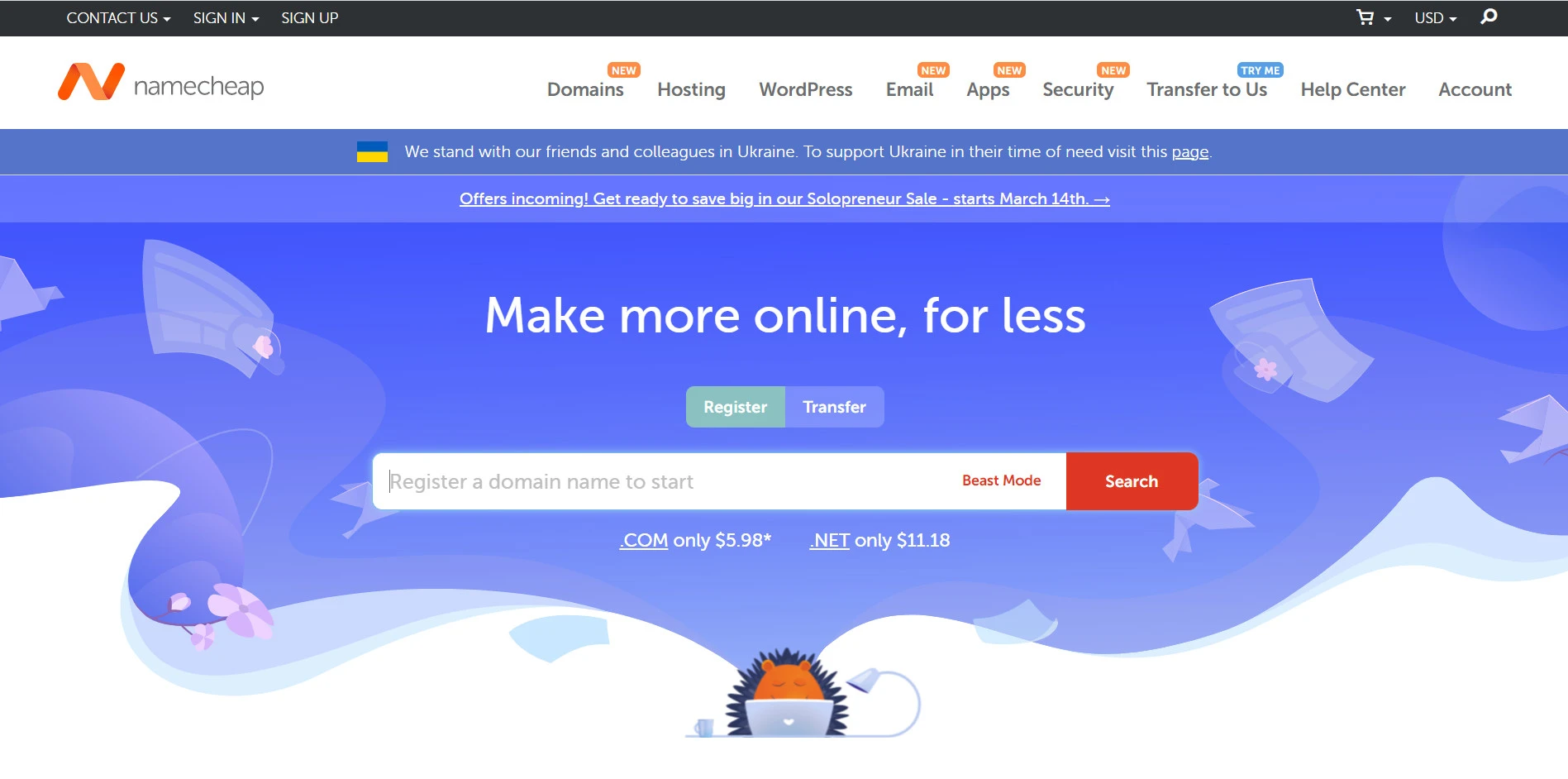
Choose your eCommerce platform
After having a custom domain name, let’s choose an eCommerce hosting platform to build yourself a dropshipping website. Though there are a bunch of best eCommerce website builders, you should opt for a platform that offers customizable website templates and is easy to use.
For instance, robust platforms like Shopify, BigCommerce, and Wix are packed with tons of built-in eCommerce features, allowing you to launch and scale your dropshipping store quickly (we’ll discuss these three platforms in length later.)

If you’re a techie who is comfortable performing the steps on how to build a dropshipping website from the ground up, you can consider using WordPress. If you’re a little tech-phobic, however, you could opt to hire a contractor instead — there are plenty of qualified WordPress ‘guns for hire’ available that know how to create an online store; all it takes is a quick search! For those concerned about environmental sustainability while setting up their site, opting for green web hosting is a responsible decision that complements your commitment to green practices.
If you are still confused about which eCommerce platform you should go for, take a look at our in-depth reviews:
- Shopify Review: Is Shopify The Crown Jewel of The eCommerce World?
- WooCommerce Review: Full Features Review & How to Setup WooCommerce?
- Wix eCommerce Review: A Full Package For Your Online Business
- BigCommerce Review: One of The Best for Scaling-up Businesses!
Choose a suitable template
When choosing a template for your dropshipping website, there are several factors you have to take into account. Some of these include:
- Niche: What is your store niche? Because if you’ve decided to dropship beauty products, choosing a template built for an electronic store isn’t a good idea.
- Design: The design of your website should be visually appealing and easy to navigate. Look for templates that have clean layouts, high-quality images, and a color scheme that complements your branding.
- Responsiveness: Your website should be accessible across all devices, including desktops, laptops, tablets, and smartphones. Ensure that your chosen template is mobile-responsive.
- Features: The template you choose should have the features you need, such as a shopping cart, contact forms, or social media integration.
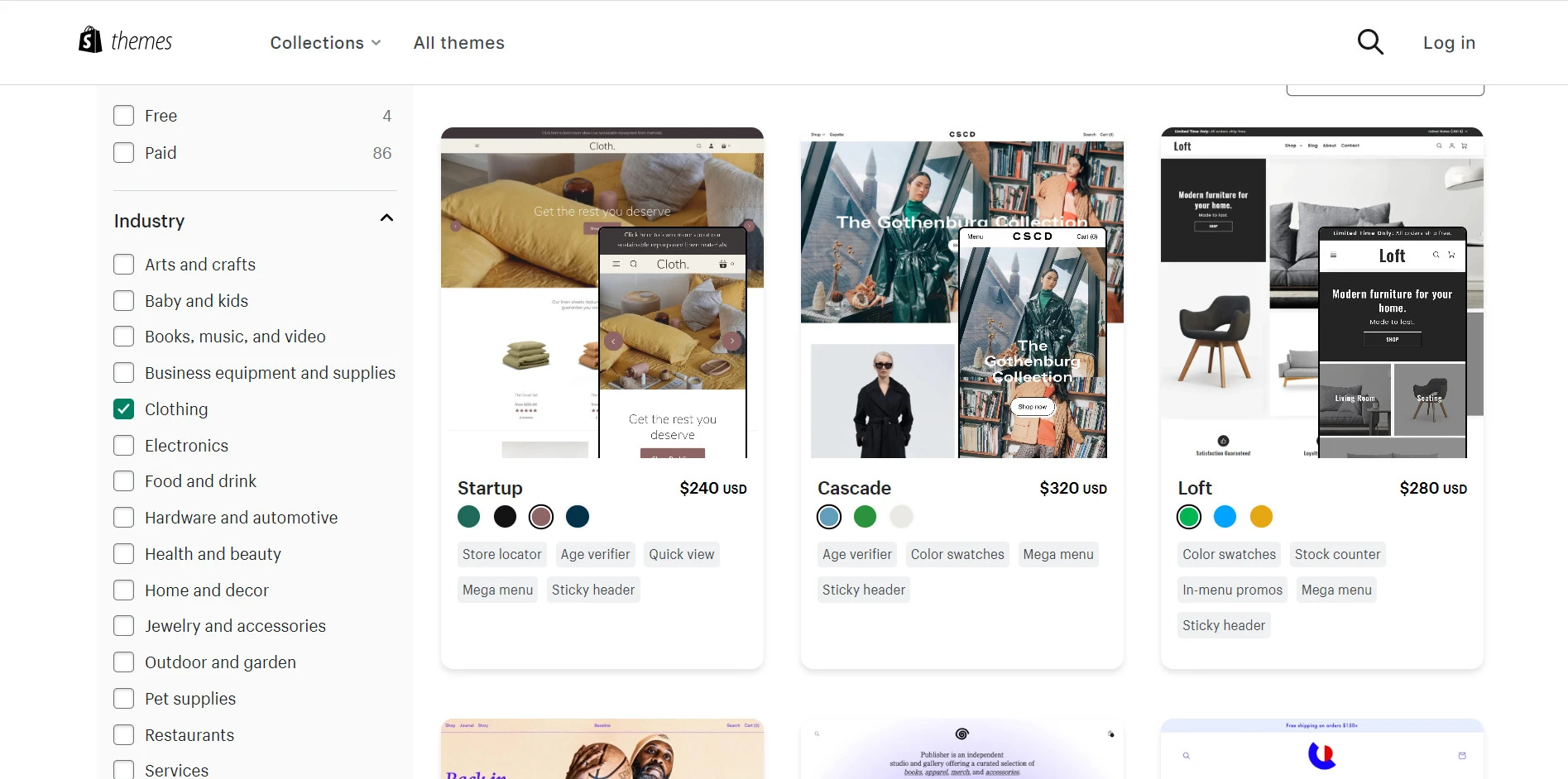
There’s a lot when it comes to designing your website. Don’t worry because our website design tips are here to help!
Customize your storefront
Once you have chosen a suitable template, it’s time to customize it. Here are some elements and pages to consider:
- Homepage: Since this might be the first page your prospects see, it should be engaging and informative. Customize the header, footer, and main content sections to suit your branding.
- Products Detail Pages: Add high-quality images, catchy product descriptions, transparent product prices, in-stock availability, etc. These are your money pages. So ensure to optimize every single element of your product pages.
- Collection Pages: Will your dropshipping store have a lot of product lines? If so, you might love to add an advanced filter on your Catalog Page to help your customers find their way to what they want faster.
- About Us Page: Leverage the ‘About Us’ page to tell your story and highlight your unique selling proposition to inspire your target audience. Add images, videos, and testimonials to make it more engaging.
- Contact Page: This page should include your contact details, such as your email address, phone number, and physical address. You can also add a contact form to make it easier for your potential customers to get in touch.
4. Find dropshipping suppliers
If you’re wondering how to build a dropshipping website effectively, one of the keys lies with the suppliers you choose. Therefore, look for suppliers who can offer reasonable fees to ensure you have a big enough profit margin to scale up your store.
As mentioned, the biggest con of running a dropshipping business is that you cannot control the product quality and shipping time. So apart from the competitive fee, here are some key factors when choosing a supplier for your store:
- Quality and variety of products: Your supplier should offer high-quality products with a range of variations and styles.
- Reliable shipping and delivery: Your supplier should offer reliable and fast shipping options to ensure customer satisfaction.
- Good customer service: Your supplier should be responsive and helpful, especially regarding product issues or shipping delays.
- Integration with your eCommerce platform: Your supplier should be compatible with your eCommerce platform to simplify the order and inventory management process.
Though there are lots of platforms where you can find your suppliers, AliExpress is a great place to start. And for that, you might need the help of dropshipping tools like DSers or Spocket to make finding your suppliers on this crowded platform easier.
These robust tools allow you to bulk import products on AliExpress straight to your dropshipping store, automate your order fulfillment, and so much more. This will save you lots of time, which you can spend on promoting your website instead.

5. Choose your business structure
If you are truly committed to completing our tutorial on how to build a dropshipping website, it is important to establish a formal and legal business structure. Here are the three most popular business structures for you to choose from.
Sole Proprietorship
A sole proprietorship is the simplest business structure, where one person owns and operates the business. This structure does not require any legal filings, and the owner is personally responsible for all aspects of the business.
[wptb id=58673]
Limited Liability Company (LLC)
An LLC is a business structure that combines the benefits of a partnership and a corporation. It offers personal liability protection to its owners, known as members, while allowing for pass-through taxation. As such, it’s a good idea to set up an operating agreement for LLC formation, covering the rights and obligations of all stakeholders in a clear and unambiguous way. The same strategy should apply to whatever structure you settle on, as there is no room for missteps at this stage.
[wptb id=58674]
C Corporation
A C corporation is a separate legal entity from its owners, known as shareholders. It offers limited liability protection to its shareholders and allows the stock sale to raise capital.
[wptb id=58675]
So the best business structure for your dropshipping store will depend on your individual needs and goals. A sole proprietorship may be the best option if you want complete control over your business and don’t need personal liability protection.
However, an LLC may be the better choice if you want personal liability protection and the flexibility to choose your management structure. And if you’re looking to raise capital and have significant growth potential, a C corporation may be the way to go.
6. Promote your dropshipping website
Now that you have done all the steps on how to build a dropshipping website, let’s bring it in front of your target audience. And here are some digital marketing strategies to boost your dropshipping site’s visibility and conversions:
- Social media marketing: Utilize platforms like Facebook, Instagram, Twitter, and LinkedIn to engage with your target audience and promote your products. For instance, you can run paid ads on Facebook and Instagram to reach a larger audience.
- Search engine optimization (SEO): Optimize your website for search engines by using relevant keywords, creating quality content, and optimizing meta tags. For example, you can use tools like Google Keyword Planner to find relevant keywords.
- Influencer marketing: Collaborate with influencers who have a large following in your niche. They can promote your products to their audience and help you gain more customers. For instance, you can collaborate with beauty bloggers and YouTubers if you sell beauty products.
- Email marketing: Build an email list and send your subscribers regular newsletters and promotional emails. You can create them effortlessly using email newsletter software. Offer them discounts and special deals to encourage them to buy from your website.
- Affiliate marketing: Partner with other websites and bloggers who can promote your products in exchange for a commission. For instance, you can join an affiliate network like ShareASale and find relevant affiliates to promote your products.

7. Constantly analyze and optimize your website
Your website is the face of your business – it can either attract or deter your potential customers. So after building a dropshipping website, you need to monitor and make timely enhancements to it constantly.
By consistently analyzing and optimizing your website, you can ensure a positive user experience, increase customer satisfaction, and drive more sales for your dropshipping business.
Some important metrics to track include bounce rate, time on site, and conversion rate.
- A high bounce rate indicates visitors leave your website quickly, possibly due to poor design or slow loading times.
- Increasing time on site can be achieved through engaging content, clear navigation, and a user-friendly layout.
- Conversion rate is the ultimate goal and can be improved through clear calls to action, compelling product descriptions, and easy checkout processes.
But how to track the metrics above? Follow this easy guide to add Google Analytics to your dropshipping website.
Dropshipping Model Explained
To ensure we’re on the same page before we build a dropshipping website, let’s spend a few minutes getting to know what dropshipping actually means.
1. What is dropshipping?
Simply put, when you do dropshipping, you don’t have the products you sell available at your physical places.
Instead, when a customer orders on your website, you purchase the item from the supplier and have it shipped straight to your customer.
As a result, the merchant doesn’t have to handle the product and order fulfillment. This eCommerce model has become increasingly popular because it allows entrepreneurs to start and build online businesses with a minimum initial investment.
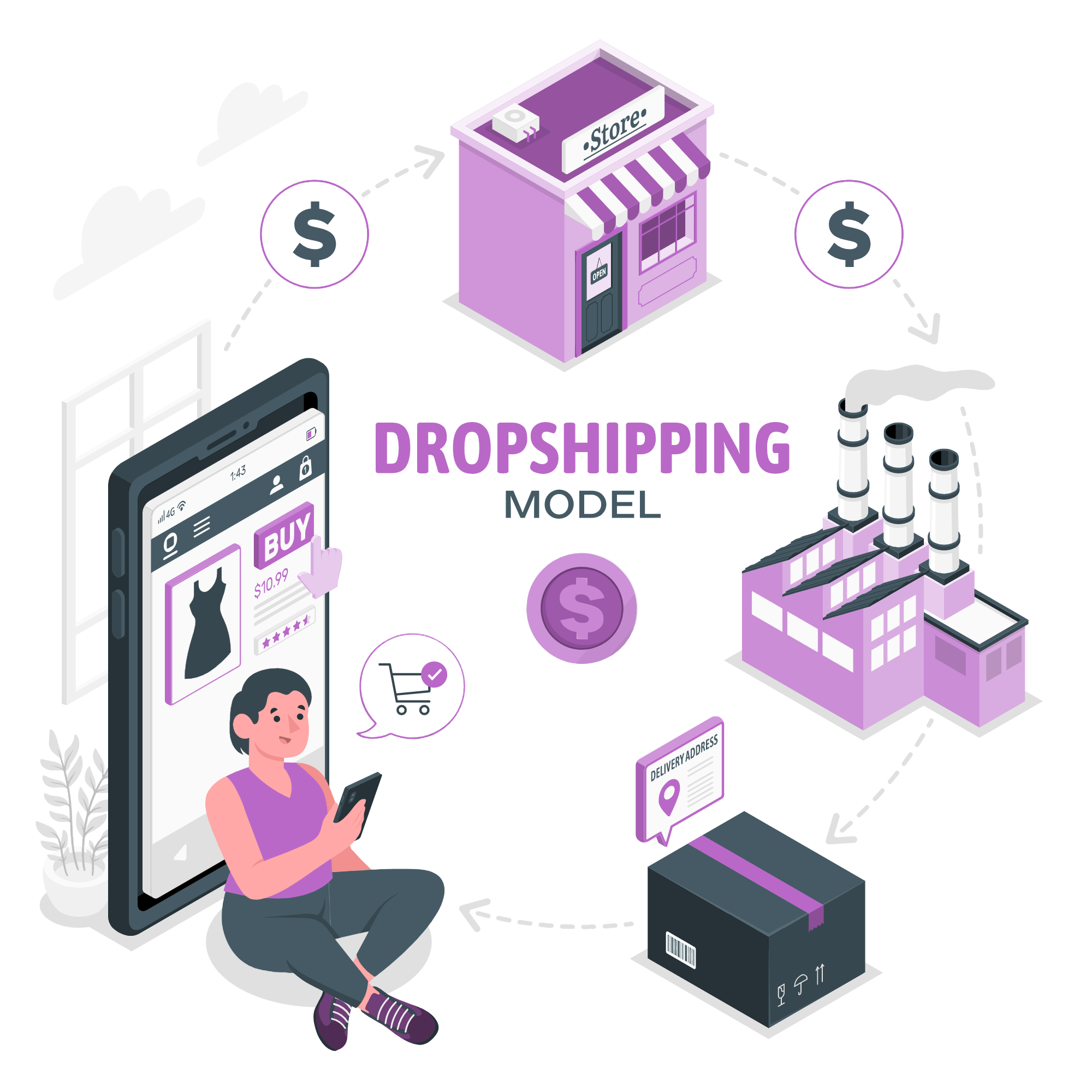
2. How does dropshipping work?
Dropshipping is simple: you partner with a supplier who ships products directly to customers on your behalf. Here’s an example for your better understanding:
- You list a hoodie for $50 on your clothing website.
- When a customer orders, you purchase the hoodie from your supplier for $30.
- The supplier then ships the product directly to the customer, and you keep the $15 difference as your profit.
This way, you don’t have to hold any inventory or handle the shipping process and still can earn a profit.
3. What are the Pros & Cons of dropshipping?
Each business model has its advantages and shortcomings, and the dropshipping model is no exception. Let’s look at some notable pros and cons of dropship eCommerce websites:
Pros
- Low startup costs: Since you don’t have to hold inventory or manage a warehouse, the upfront costs are significantly lower than traditional retail models.
- Easy to get started: You can start a dropshipping business from anywhere in the world, and with the help of eCommerce platforms like Shopify, you can set up a website quickly and easily.
- Flexible: Dropshipping allows you to sell a wide range of products without worrying about stocking inventory or managing shipping logistics.
Cons
- Low-profit margins: Since the supplier takes care of inventory and shipping, they may charge higher prices for their products, which can eat into your profit margins.
- Less control over the fulfillment process: Since you’re relying on a supplier to handle the shipping process, you have less control over the quality of the products and the speed of delivery.
- Competition: Dropshipping has become increasingly popular over the years, which means there is a lot of competition in many niches, making it harder to stand out.
Gain more insight about the dropshipping business type through our inclusive articles below:
- How to Start Dropshipping for Free: Ultimate Guide to Start
- Is Dropshipping Worth It?
- The Best eCommerce Platforms for Dropshipping
3 Best Platforms to Create a Dropshipping Website
1. Shopify
With its ease of use, customizable templates, extensive customizations, built-in eCommerce features, and a vast range of dropshipping apps, Shopify is the first name we want to mention.
If you are struggling with how to build a dropshipping website successfully, let Shopify help. Firstly, it offers a range of pre-designed templates that can be easily customized to reflect the branding and style of any business.

With Shopify, you can also access built-in eCommerce features like shipping, taxes, and payment processing, making managing the store’s operations easy.
Plus, the platform has an extensive app store, offering a wide range of apps that help automate marketing, sales, inventory management, etc. In our estimation, Shopify provides dropshippers with a powerful, flexible, and user-friendly platform to build their online business.
Start building your Shopify dropshipping business and drive sales with our articles below:
- Shopify Tutorial: 9 Complete Steps to Get Instant Sales
- Top 15+ Successful Shopify Dropshipping Stores
- Top 20 Best Shopify Themes For Dropshipping
- Best Dropshipping Apps for Shopify You Can’t Miss
2. Wix
Wix is a website builder offering various features that make it a great option for how to build a dropshipping website that converts. One big plus of Wix is that the platform provides you with hundreds of free templates to choose from.
Customizations are also plentiful, with options to add apps and integrations and even more extensive options with the Wix Code feature.
Regarding eCommerce features, Wix provides everything needed for a dropshipping store, including options for product management, shipping, and payment processing.
However, in terms of dropshipping and marketing apps, Wix’s app market doesn’t give you as many options as Shopify.
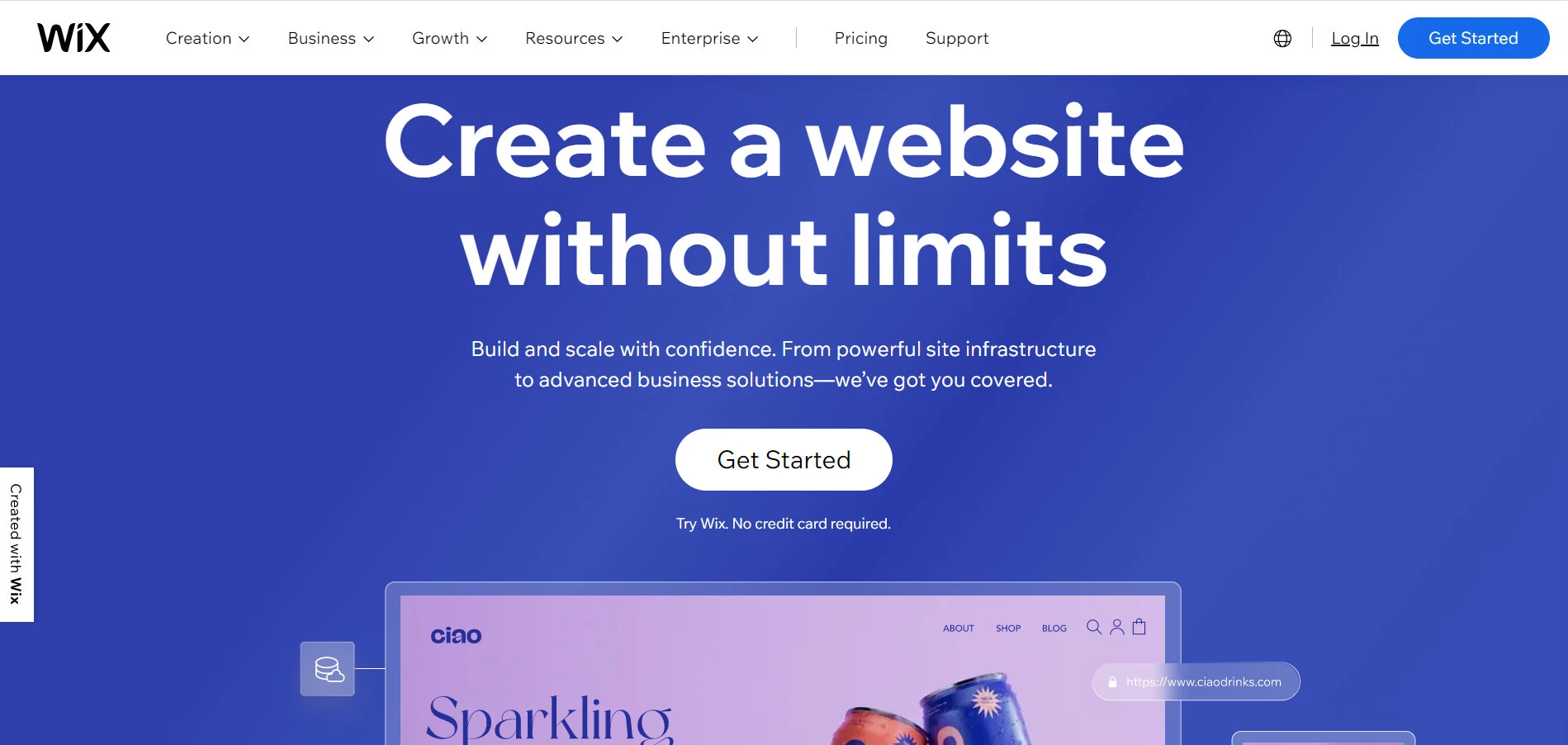
It’s time to kick-start your dropshipping store with Wix; here’s a detailed tutorial on how to do so: Wix Dropshipping Guide – 5 Simple Steps to Dropship on Wix.
3. BigCommerce
If you’re wondering how to build a dropshipping website that converts, BigCommerce should be your go-to choice.
BigCommerce is a comprehensive and flexible website builder well-suited for dropshipping websites. From our point of view, one of its strong points is its user-friendly interface. This enables even non-technical users to build and manage an online store easily.
Like Shopify, BigCommerce offers 12 free themes and 100+ paid themes – all are fully customizable to your liking. You can add custom product options, discount codes, and advanced shipping rules. BigCommerce comes with robust built-in eCommerce functionalities that help streamline operations and reduce administrative tasks.
BigCommerce provides a rich app ecosystem spanning inventory management to marketing automation. Though BigCommerce App Store is more crowded than Wix, it still falls behind Shopify in numbers.
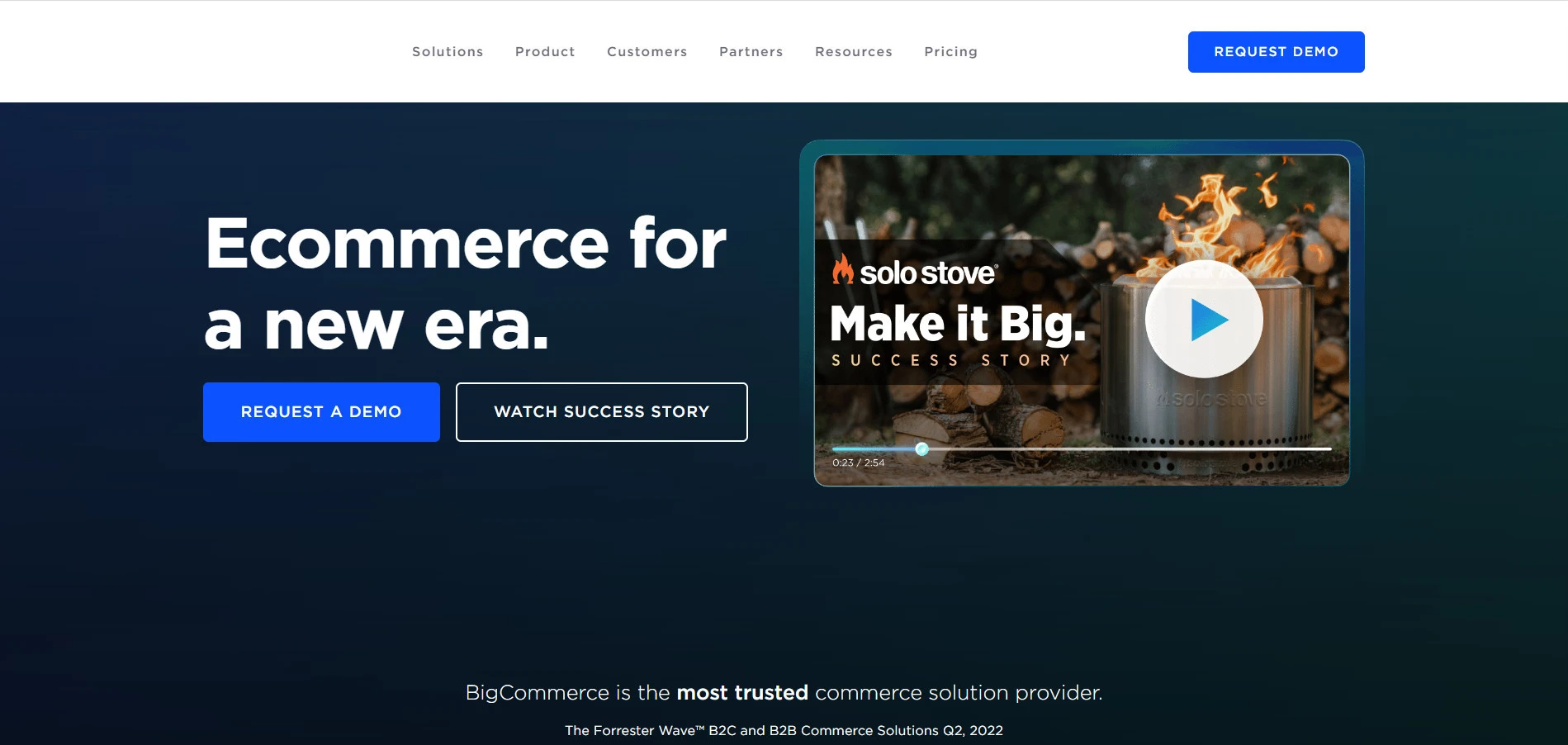
Follow our guide on how to build a dropshipping website on BigCommerce: Beginner Step-by-step Guide: How To Set Up A BigCommerce Dropshipping Business.
How To Build a Dropshipping Website – FAQs
[sp_easyaccordion id=”56549″]
Final Words
In conclusion, building a dropshipping website that helps you make a profit requires careful planning, product research, and a strong understanding of your target audience. Hopefully, in this article today, LitExtension – #1 Shopping Cart Migration Expert has helped you know how to build a dropshipping website.
For more insightful tips and tricks about eCommerce, feel free to check out our LitExtension Blog or join the Facebook Community Group.